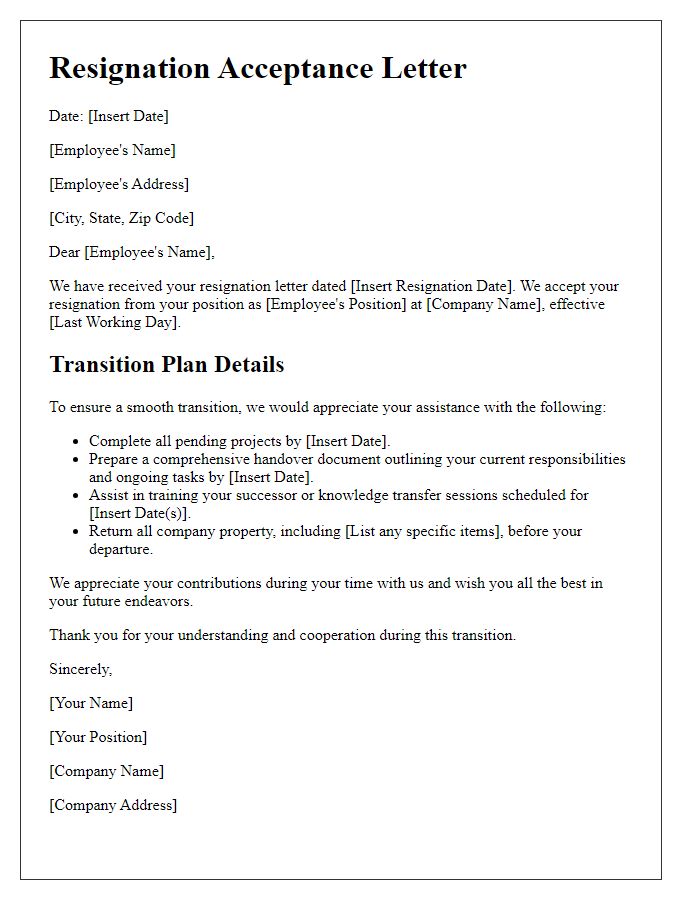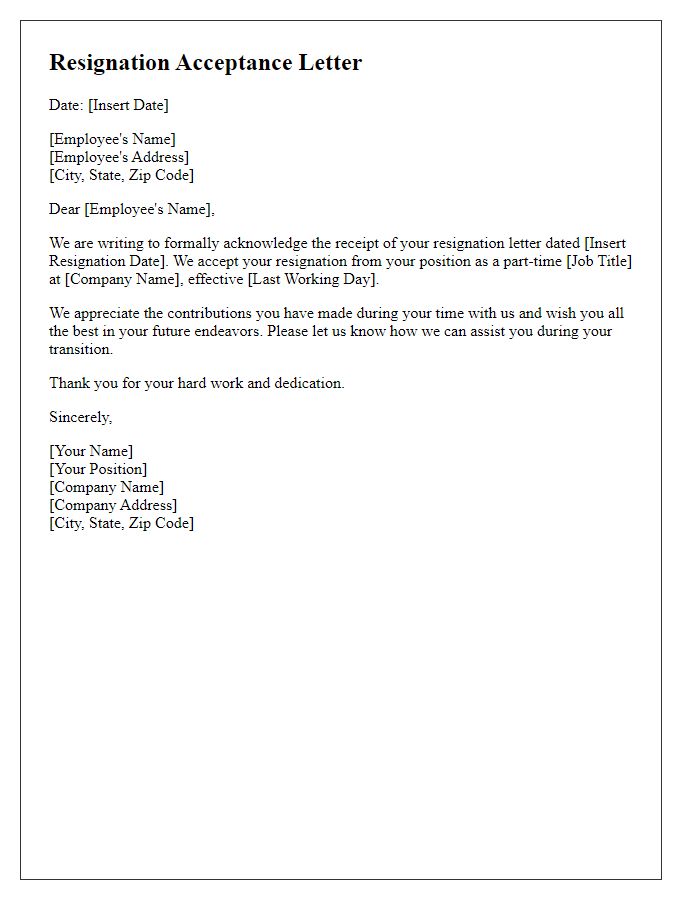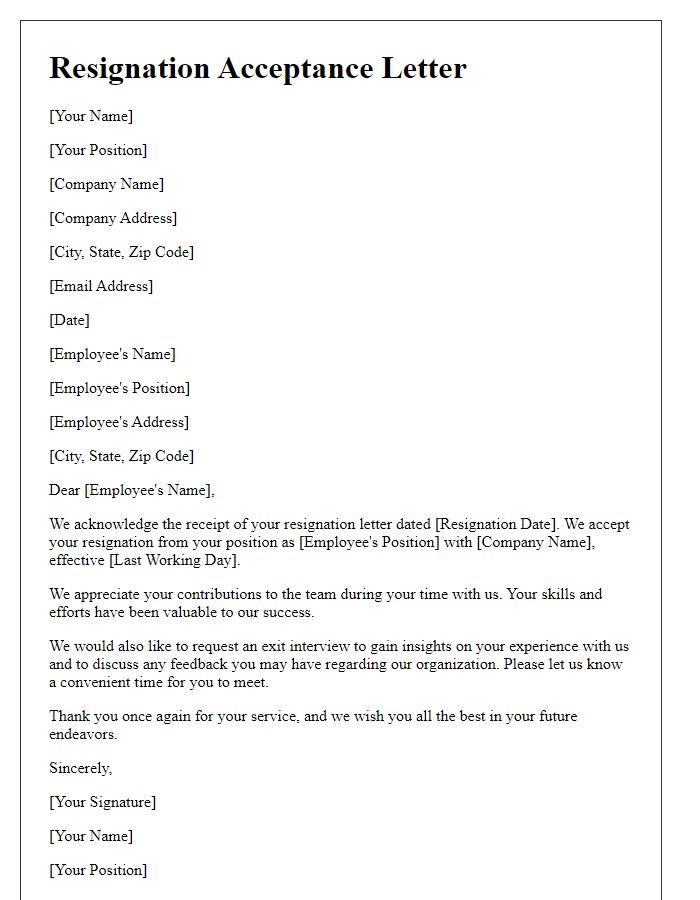Are you facing the challenge of crafting a resignation acceptance letter? If so, you're in the right place! This kind of letter not only serves as a formal acknowledgment of an employee's intent to leave but also offers an opportunity to express appreciation for their contributions. Let's explore the essential components of a resignation acceptance letter and provide you with a useful template that makes the process simple and clearâkeep reading to discover more!

Acknowledgment of Resignation
Voluntary resignation acceptance acknowledges the employee's decision to leave the organization, formalized by a written letter. Acknowledgment typically includes the employee's name, position, and effective resignation date. This notice serves to confirm receipt of the resignation letter and express appreciation for the employee's contributions to the company. It often reflects on positive experiences and accomplishments during their tenure, emphasizing the value brought to the team. Additionally, the acknowledgment outlines any necessary steps for the transition process, such as knowledge transfer or exit interviews, ensuring a smooth departure.
Final Working Date
The acknowledgment of voluntary resignation conveys the organization's formal acceptance of an employee's decision to leave their position. The final working date, often specified in the resignation letter, typically serves as the last day the employee will fulfill their duties. This procedure involves the Human Resources department processing the resignation, followed by a seamless transition of responsibilities to ensure continuity within the team and the overall functioning of the workplace environment. Additionally, it is common to include a note acknowledging the employee's contributions during their tenure in order to foster positive relationships and maintain goodwill. The acceptance letter may also outline details regarding the final paycheck, remaining benefits, and any exit interviews planned to gather feedback on the employee's experiences within the organization.
Transition Assistance and Handover
An effective transition during voluntary resignation ensures the smooth transfer of responsibilities and knowledge. Employees should prepare detailed documentation outlining current projects, key contacts, and deadlines, facilitating continuity for remaining team members. Meetings may be scheduled for direct handover discussions, providing an opportunity to clarify any ongoing tasks and expectations. Establishing a definitive last working day allows for a structured exit plan, enabling the departing employee to complete remaining duties and assist colleagues. Ensuring all administrative requirements, such as returning company property and settling accounts, reinforces professional etiquette and prepares the organization for future transitions.
Expression of Gratitude
A voluntary resignation acceptance letter typically expresses gratitude towards the departing employee while also acknowledging their contributions to the organization. This formal document serves to maintain a positive relationship and ensure a smooth transition. Key components may include the acknowledgment of the resignation letter, appreciation for the employee's work duration, specific achievements or projects they contributed to, and a wish for their future endeavors. Such letters are often sent from Human Resources or management, highlighting the importance of employee recognition within the workplace.
Future Contact Information
When an employee voluntarily resigns, it is essential to acknowledge their departure professionally and with gratitude. Acceptance of resignation should include the employee's future contact information for ongoing communication. Acknowledgment of the resignation should express appreciation for the employee's contributions. Mention the start date of the employee and how their role, such as a Marketing Coordinator at XYZ Corporation, impacted the team's success, improving sales by 20% during their tenure. Offer well wishes for future endeavors, highlighting any personal notes, such as pursuing their Master's degree or relocating to a new city. Request updated contact information for future correspondence, ensuring that, maybe in two years, there might be opportunities for collaboration or networking. Provide details about the exit interview process, if applicable, and any remaining tasks or return of company property. Set a positive tone for the farewell, perhaps by noting a farewell gathering expected on the employee's last day, to celebrate their time with the team and maintain connections.
Letter Template For Voluntary Resignation Acceptance Samples
Letter template of voluntary resignation acceptance for immediate effect

Letter template of voluntary resignation acceptance with acknowledgment of achievements

Letter template of voluntary resignation acceptance with transition plan details

Letter template of voluntary resignation acceptance with gratitude expressed

Letter template of voluntary resignation acceptance for part-time employees

Letter template of voluntary resignation acceptance for a managerial position

Letter template of voluntary resignation acceptance with request for exit interview

Letter template of voluntary resignation acceptance emphasizing future networking

Letter template of voluntary resignation acceptance with confirmation of final paycheck





Comments